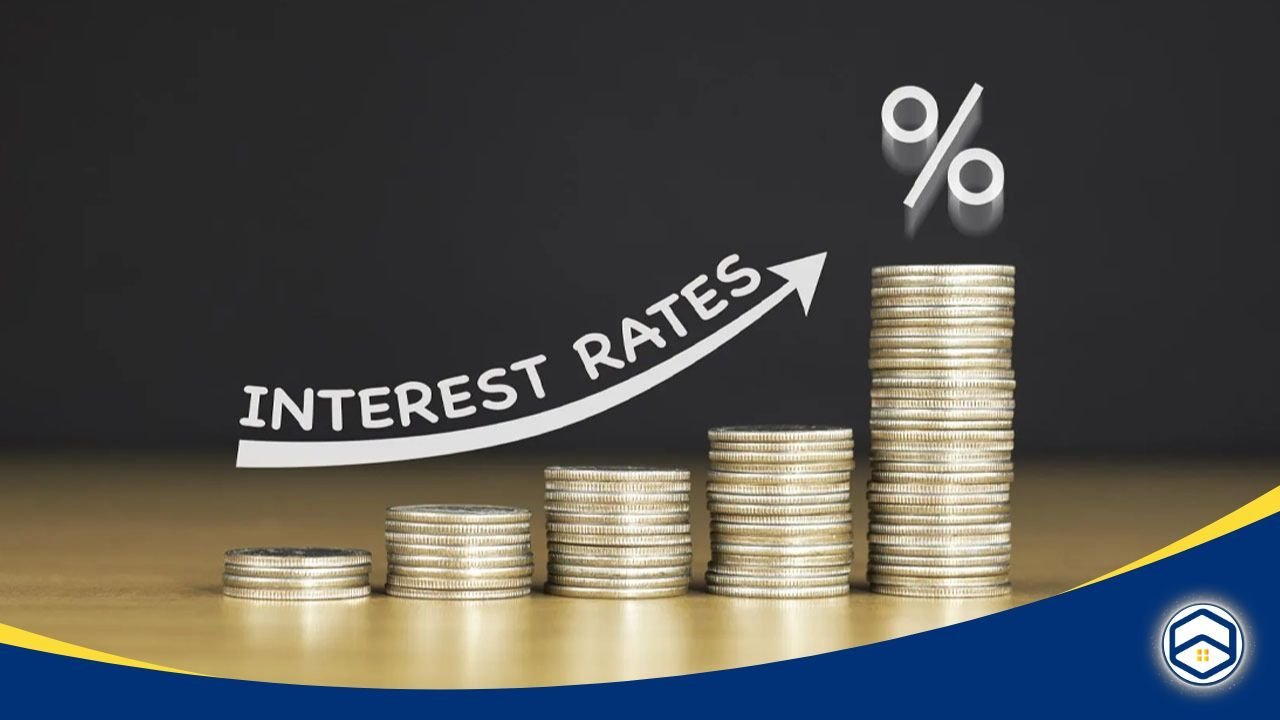The term “rising interest rates” has become a hot topic in financial circles, affecting everything from personal loans to global markets. Understanding the nuances of rising interest rates, their causes, and their consequences is crucial for investors, homeowners, and businesses. In this comprehensive article, we’ll delve into the various facets of rising interest rates, exploring their effects on the economy, investments, and everyday life.
What Are Interest Rates?

Interest rates, fundamental to understanding financial dynamics, represent the expense associated with borrowing funds, typically articulated as a percentage of the total loan value. These rates are determined by central banking institutions such as the Federal Reserve in the United States, playing a pivotal role in shaping the interest rates applied by banks for loans and the returns offered on savings deposits.
Two primary categories exist: fixed and variable interest rates. Fixed rates remain steady throughout the entirety of the loan’s duration, providing predictability for borrowers, while variable rates can vary in response to market fluctuations, influencing the overall cost of borrowing over time.
Why Do Interest Rates Rise?
Interest rates experience upward movement due to a variety of interconnected factors that collectively influence economic stability and monetary policy. One of the primary drivers behind rising interest rates is inflation, the persistent increase in the prices of goods and services. Central banks respond to high inflation by raising interest rates, effectively curbing consumer spending and business investments as borrowing becomes costlier. This strategy aims to maintain price stability and prevent excessive economic overheating.
Moreover, economic growth plays a pivotal role in the trajectory of interest rates. During periods of robust economic expansion, demand for credit often intensifies, prompting central banks to raise rates to moderate borrowing and temper potential inflationary pressures. Conversely, sluggish economic growth may prompt central banks to lower rates to stimulate borrowing and spur economic activity.
Central bank policies, set by institutions like the Federal Reserve, exert significant influence over interest rate movements. Adjustments in these rates are pivotal tools for managing monetary supply and fostering sustainable economic conditions. Governments’ fiscal policies, including the management of public debt levels, also contribute to interest rate dynamics, as higher debt burdens can elevate borrowing costs.
Additionally, global economic conditions and foreign exchange rates can impact domestic interest rates. Interconnected financial markets and global capital flows influence the relative attractiveness of domestic interest rates compared to international benchmarks, thereby affecting local borrowing costs.
The Effects of Rising Interest Rates on the Economy

Rising interest rates have wide-ranging effects on the economy. Here are some key impacts:
- Consumer Spending
Higher interest rates increase the cost of borrowing, making loans for cars, homes, and other big-ticket items more expensive. This can lead to a decrease in consumer spending, which in turn slows down economic growth.
- Business Investment
Businesses also feel the pinch of rising interest rates. Higher borrowing costs can lead to reduced investments in new projects, expansion, and hiring. This can slow down innovation and economic progress.
- Housing Market
The housing market is particularly sensitive to interest rates. Rising rates can lead to higher mortgage payments, reducing the affordability of homes. This can slow down the housing market, leading to lower home sales and reduced home prices.
- Inflation Control
While rising interest rates can have a cooling effect on the economy, they are also an essential tool for controlling inflation. By making borrowing more expensive, central banks can reduce spending and investment, which helps to keep inflation in check.
Impact on Investments

Investors must pay close attention to rising interest rates, as they can significantly impact various asset classes:
- Bonds
Bond prices have an inverse relationship with interest rates. When rates rise, bond prices fall. This is because new bonds are issued at higher rates, making existing bonds with lower rates less attractive. Investors holding bonds may see a decrease in the value of their investments.
- Stocks
The stock market can be volatile in response to rising interest rates. Higher rates can lead to reduced corporate profits as borrowing costs increase. This can result in lower stock prices, particularly for high-growth companies that rely on cheap credit.
- Real Estate
Real estate investments can be negatively impacted by rising interest rates. Higher mortgage rates can lead to lower demand for properties, reducing property values and rental incomes.
- Savings Accounts
On the positive side, rising interest rates can benefit savers. Banks typically offer higher interest rates on savings accounts and certificates of deposit (CDs) when interest rates rise, providing better returns for those who save money.
Strategies for Investors in a Rising Interest Rate Environment

Investors can adopt several strategies to navigate the challenges posed by rising interest rates:
- Diversification
Diversifying investments across different asset classes can help mitigate risks. Including a mix of stocks, bonds, real estate, and alternative investments can provide a buffer against the negative effects of rising rates.
- Focus on Quality
Investing in high-quality, financially stable companies with strong balance sheets can be a safer bet during periods of rising interest rates. These companies are better equipped to handle increased borrowing costs and economic uncertainty.
- Short-Term Bonds
Short-term bonds are less sensitive to interest rate changes compared to long-term bonds. Investors can reduce their exposure to interest rate risk by shifting some investments to shorter-duration bonds.
- Real Assets
Investing in real assets like real estate, commodities, and infrastructure can provide a hedge against inflation and rising interest rates. These assets often have intrinsic value that can appreciate over time.
Personal Finance Considerations
Rising interest rates also have significant implications for personal finance. Here are some tips to manage your finances effectively in a rising rate environment:
- Review Debt
Review and refinance high-interest debt where possible. Locking in fixed rates can protect against future rate hikes and save money on interest payments.
- Emergency Fund
Ensure you have an adequate emergency fund. Higher interest rates can lead to economic uncertainty, and having a financial cushion can provide peace of mind.
- Adjust Investment Strategy
Consider adjusting your investment strategy to account for higher rates. This may involve shifting to more conservative investments or reallocating assets to take advantage of higher interest rates on savings accounts and CDs.
- Monitor the Housing Market
If you are planning to buy a home, monitor mortgage rates closely. Rising interest rates can significantly impact your mortgage payments and overall affordability. Consider locking in a rate if you find a favorable deal.
Global Perspective on Rising Interest Rates

Rising interest rates are not just a domestic issue; they have global implications. Different countries may experience varying effects based on their economic conditions, policies, and exposure to global markets. For instance, emerging markets with significant foreign debt may face higher repayment costs and economic challenges as global interest rates rise.
The Role of Central Banks
Central banks play a crucial role in managing interest rates. They must balance the need to control inflation with the goal of supporting economic growth. This delicate balancing act requires careful analysis of economic indicators and a proactive approach to policy adjustments.
Conclusion
Rising interest rates are a complex and multifaceted issue with far-reaching implications for the economy, investments, and personal finance. By understanding the factors that drive interest rate changes and their effects, individuals and businesses can make informed decisions to navigate this challenging environment.
Investors should focus on diversification, quality investments, and real assets to mitigate risks. On a personal finance level, reviewing debt, maintaining an emergency fund, and adjusting investment strategies are key steps to manage the impact of rising interest rates.
As global economic conditions continue to evolve, staying informed about interest rate trends and central bank policies will be crucial for financial success. Whether you’re an investor, homeowner, or business owner, understanding and preparing for rising interest rates can help you make sound financial decisions and achieve your long-term goals.











